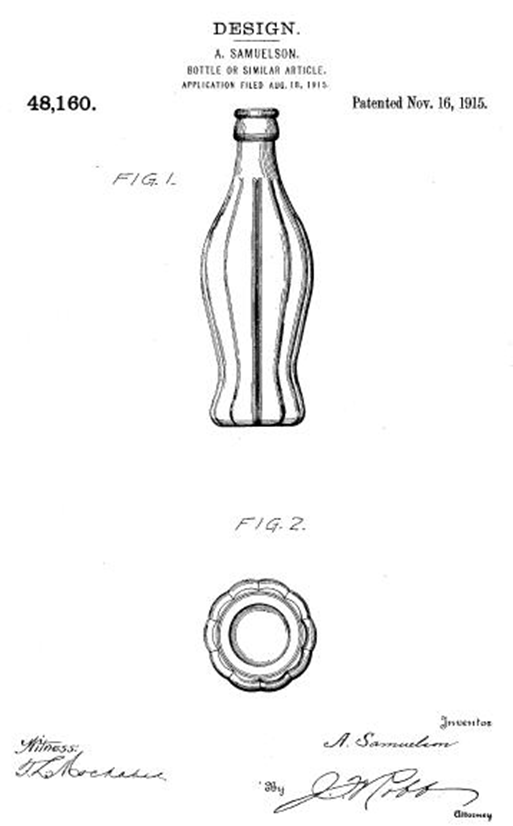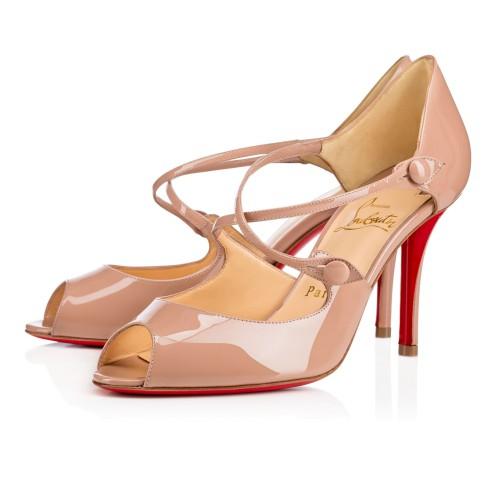Imagine you’ve designed a new product with 3D printing. Thinking of ways to protect it can be a daunting challenge. Hopefully, you’ll consider some basic agreements with any third parties that participated in the design, such as non-disclosure agreements, employee agreements and joint venture agreements, which are handy documents to make sure that the rights and liabilities in the project are well defined at the very beginning. Those agreements are an excellent first step at the start of the project (and can save a lot of headaches down the road). Consider a joint venture where one party is providing capital and the other is contributing know-how. If the venture fails, who will own the intellectual property (IP)? Will there be re-payment? Who has the right to sue? Who can practice the technology? Will the employees have non-compete restrictions? These protections are best handled with agreements which are the most important form of IP protection, and relatively inexpensive.
If you’re considering patenting the design, assuming it’s patentable — i.e., novel and non-obvious — you’re looking at years of proceedings before the patent office and thousands of dollars to acquire a utility patent, which protects the functional aspects of the design, its manufacture and/or composition, for example. Thinking of worldwide patent protection? That’s readily available through the Patent Cooperation Treaty, which most nations have signed, but again more time and more thousands of dollars. An international patent portfolio on a product can take some five years to achieve. That’s a lifetime in 3D printing, especially when one also considers the advances in reverse engineering. Laser scanners are now exceedingly accurate and can easily render point cloud data into usable CAD drawings (for conversion into STL printing files).
A potential avenue of protection with 3D printing is trade dress rights. Trade dress rights are an important form of intellectual property protection but are often over looked. Simply stated, a product or device is also entitled to trademark protection under certain circumstances but it must have “secondary meaning” or achieved market distinctiveness in order to be entitled to the protection.
First, a few basics. A trademark is defined in 15 U.S.C. § 1127 as including “any word, name, symbol, or device or any combination thereof” used by any person “to identify and distinguish his or her goods, including a unique product, from those manufactured or sold by others and to indicate the source of the goods, even if that source is unknown.” In order to be registered, a mark must be capable of distinguishing the applicant’s goods from those of others. § 1052. Marks are often classified in categories of generally increasing distinctiveness; following the classic formulation set out by Judge Friendly, they may be (1) generic; (2) descriptive; (3) suggestive; (4) arbitrary; or (5) fanciful. See Abercrombie & Fitch Co. v. Hunting World, Inc., 537 F.2d 4, 9 (CA2 1976).
Registering a product for trademark protection is cumbersome. The Supreme Court in Wal-Mart Stores, Inc. v. Samara Brothers, Inc. 532 U.S. 23, 121 S. Ct. 1255 (2001) ruled in a litigation that an unregistered product must have acquired distinctiveness to be accorded protection. The Trademark Office adopted this rationale so that in order to register a product as a trademark, the product must first have acquired distinctiveness in the market place.
The Coke Bottle, which began its life as a design patent over a century ago, is an excellent example of how a physical item can achieve market distinctiveness so that the appearance of the product is associated with a brand (and achieve trade dress rights):
With the design patent in place, the product can rely on the design patent for basic protection while the product itself acquires distinctiveness through success in the market place. The bottle shape continues to appear in Coca Cola’s advertisements, as depicted below:
One caveat is the distinction between the protection of functional attributes (achieved with a utility patent). Trademark law indefinitely protects designs that “identify a product with its manufacturer or source.” TrafFix Devices, Inc. v. Marketing Displays, Inc., 532 U.S. 23, 28, 121 S.Ct. 1255, 149 L.Ed.2d 164 (2001). Patent law, on the other hand, “encourage[s] invention by granting inventors a monopoly over new product designs or functions for a limited time.” Qualitex Co. v. Jacobson Prods. Co., 514 U.S. 159, 164, 115 S.Ct. 1300, 131 L.Ed.2d 248 (1995). The so-called “functionality doctrine prevents trademark law, which seeks to promote competition by protecting a firm’s reputation, from instead inhibiting legitimate competition by allowing a producer to control a useful product feature.” McAirlaids v. Kimberly Clark Corp, 756 F.3d 307 (2014).
When assessing a design element’s functionality, courts often look at (1) the existence of utility patents, (2) advertising focusing on the utilitarian advantages of a design, (3) the availability of “functionally equivalent designs,” and (4) the effect of the design on manufacturing. Valu Engineering, 278 F.3d at 1274 (citing In re Morton–Norwich Prods., Inc., 671 F.2d 1332, 1340–41 (C.C.P.A.1982)). McAirlaids v. Kimberly Clark Corp, 756 F.3d 307 (2014).
What does this mean? Turning again to the Coke bottle as an example, the trade dress right protects the look of the bottle associated with the Coke brand as opposed to its functionality (i.e., that it holds soda!). An important aspect of the trade dress right is that it goes on indefinitely while utility patents and design patents expire. Confused about the design patent? No wonder! The design patent is a patent right that protects the ornamental features of the design (but is limited in time and does not take into consideration the source or origin of the goods, i.e., the brand, i.e., its trade dress).
Even the color of a product can achieve trade dress rights. Take the case of of Christian Louboutin S.A. v. Yves Saint Laurent America…, 696 F.3d 206 (2012). Louboutin alleged that Yves Saint Laurent infringed its trademark on a red woman’s outsole in a high heeled shoe. The District Court ruled there was no protection for a product with a single color, however, the Appellate Court concluded that Louboutin’s trademark, which covered the red, lacquered “outsole of a woman’s high fashion shoe,” had acquired limited “secondary meaning” as a distinctive symbol that identifies the Louboutin brand. The Court denied a requested injunction (at the preliminary stage of the case) because the accused product did not just include the claimed “red outsole” (the litigation moved forward).
A good bet on the road to protection for a product manufactured with 3D printing, assuming that a utility patent to protect its functional aspects isn’t appropriate, is to consider pursuing design patent protection. On February 13, 2015, the United States Patent Office announced that the United States deposited its instrument of ratification to the Geneva Act of the Hague Agreement Concerning the International Registration of Industrial Designs (Hague Agreement) with the World Intellectual Property Organization. The treaty went into effect for the United States on May 13, 2015. An entity may now register up to 100 designs in over 62 territories with the filing of one single international application! Moreover, these design registrations can be put in place at a fraction of the cost of a utility patent portfolio. All and all, a pretty simple way to develop an IP portfolio and without waiting years to achieve it.
Finally, remember too that copyright protection may also be available if the design encompasses an artistic expression. The copyright is automatic and attaches at the time of the creation of the work. The Berne Convention on International Copyrights provides protection throughout most of the world.
Bill Cass is a Partner and Co-Chair of the Litigation and Additive Manufacturing Practices at with Cantor Colburn LLP (www.cantorcolburn.com). Bill’s cases involve complex technology, including medical devices, circuitry, mechanical engineering, material science, chemistry, and computer software. Bill has spoken on topics concerning intellectual property internationally at EuroMold, IVA Sweden, Rapid (SME), and also at a White House Symposium on Additive Manufacturing.
Subscribe to Our Email Newsletter
Stay up-to-date on all the latest news from the 3D printing industry and receive information and offers from third party vendors.
You May Also Like
Gorilla Sports GE’s First 3D Printed Titanium Cast
How do you help a gorilla with a broken arm? Sounds like the start of a bad joke a zookeeper might tell, but it’s an actual dilemma recently faced by...
Nylon 3D Printed Parts Made More Functional with Coatings & Colors
Parts 3D printed from polyamide (PA, Nylon) 12 using powder bed fusion (PBF) are a mainstay in the additive manufacturing (AM) industry. While post-finishing processes have improved the porosity of...
$25M to Back Sintavia’s Largest Expansion of Metal 3D Printing Capacity Since 2019
Sintavia, the digital manufacturing company specializing in mission-critical parts for strategic sectors, announced a $25 million investment to increase its production capacity, the largest expansion to its operations since 2019....
Velo3D Initiates Public Offering in a Bid to Strengthen Financial Foundations and Drive Future Growth
Velo3D (NYSE: VLD) has been among a number of publicly traded 3D printing firms that have attempted to weather the current macroeconomic climate. After posting a challenging financial report for 2023,...

































